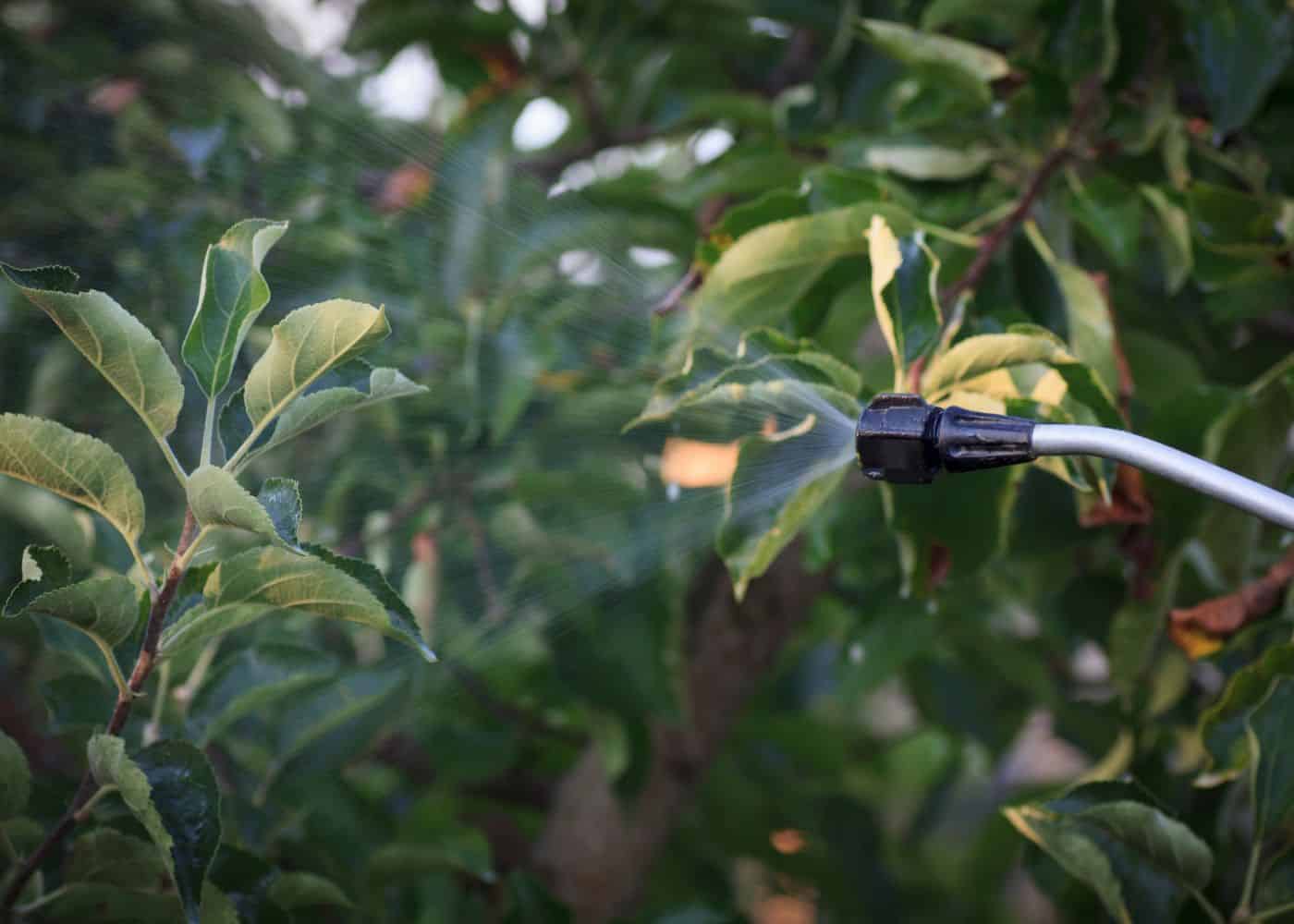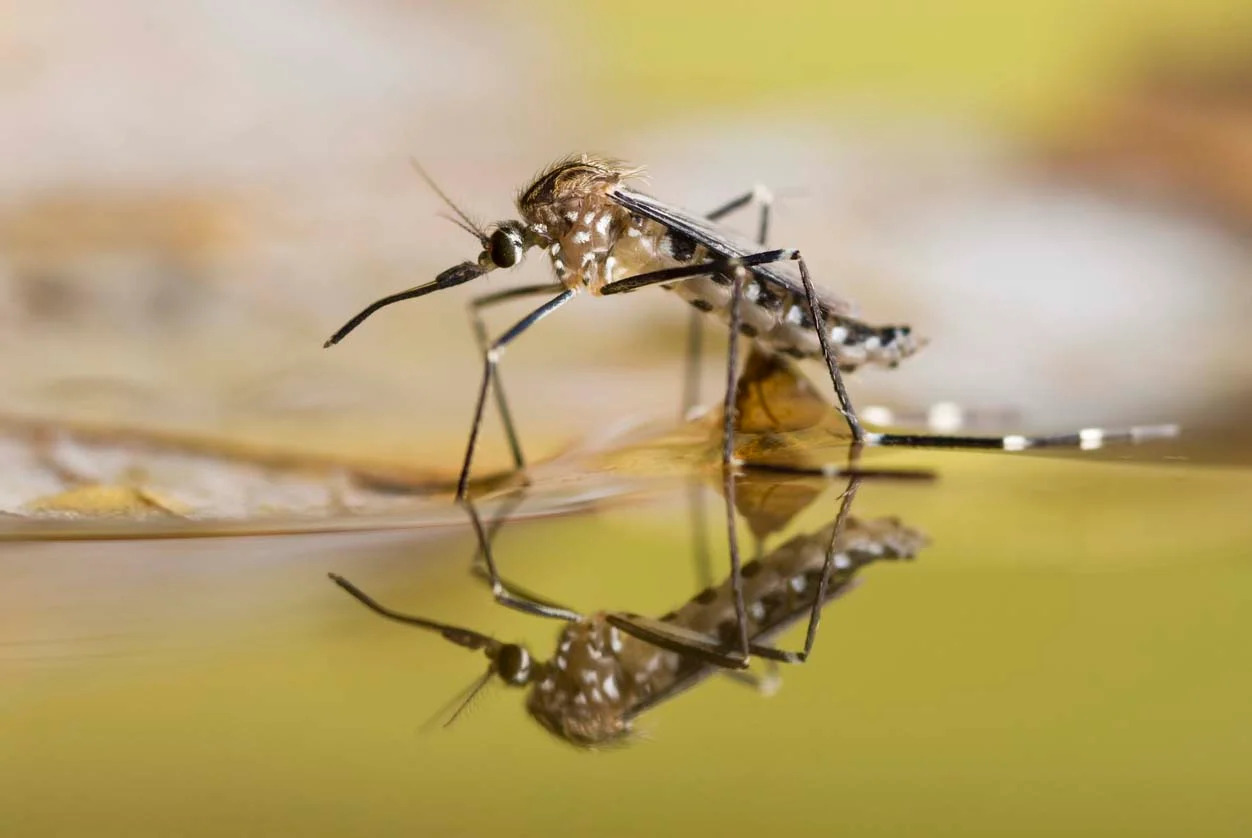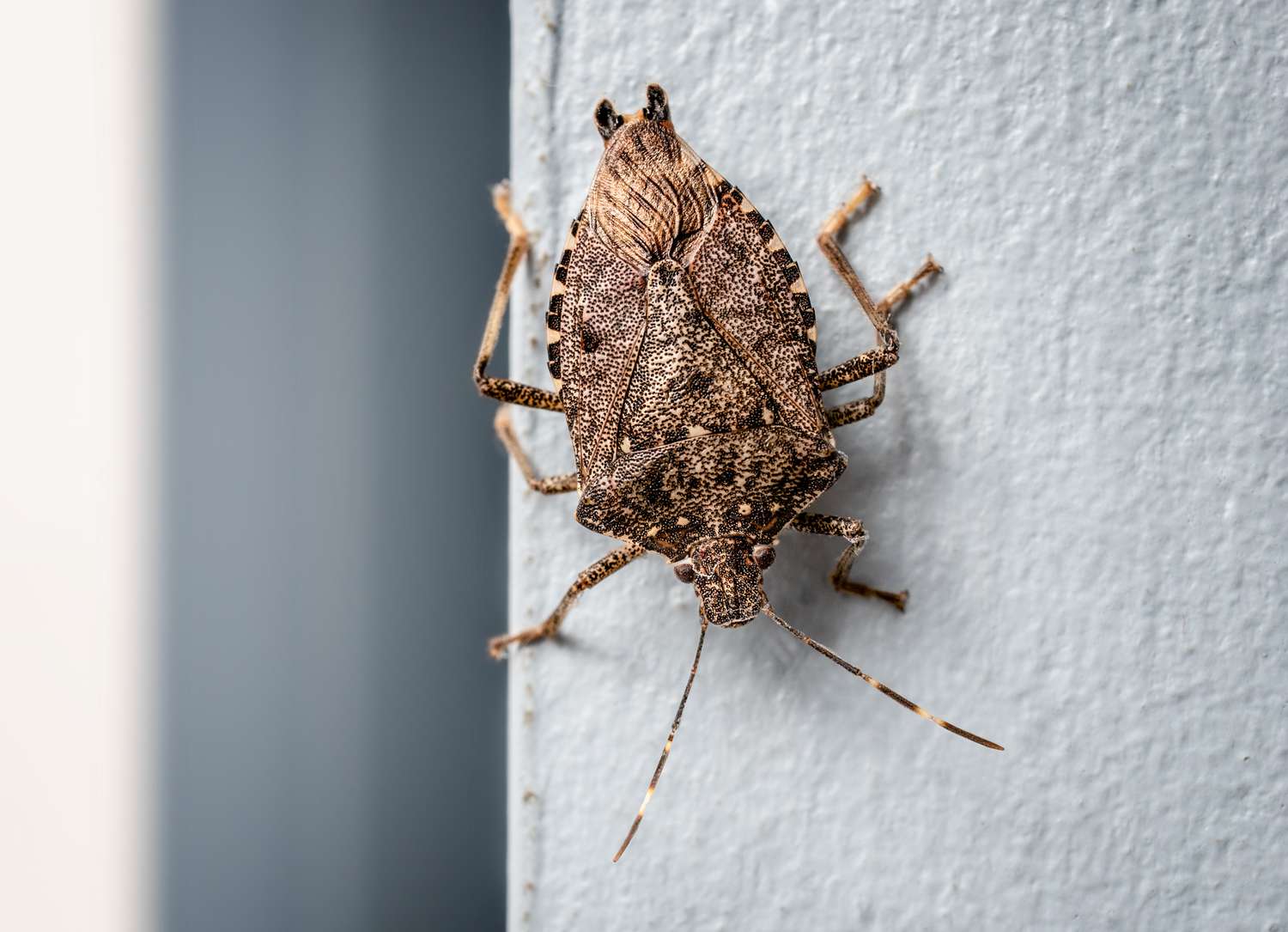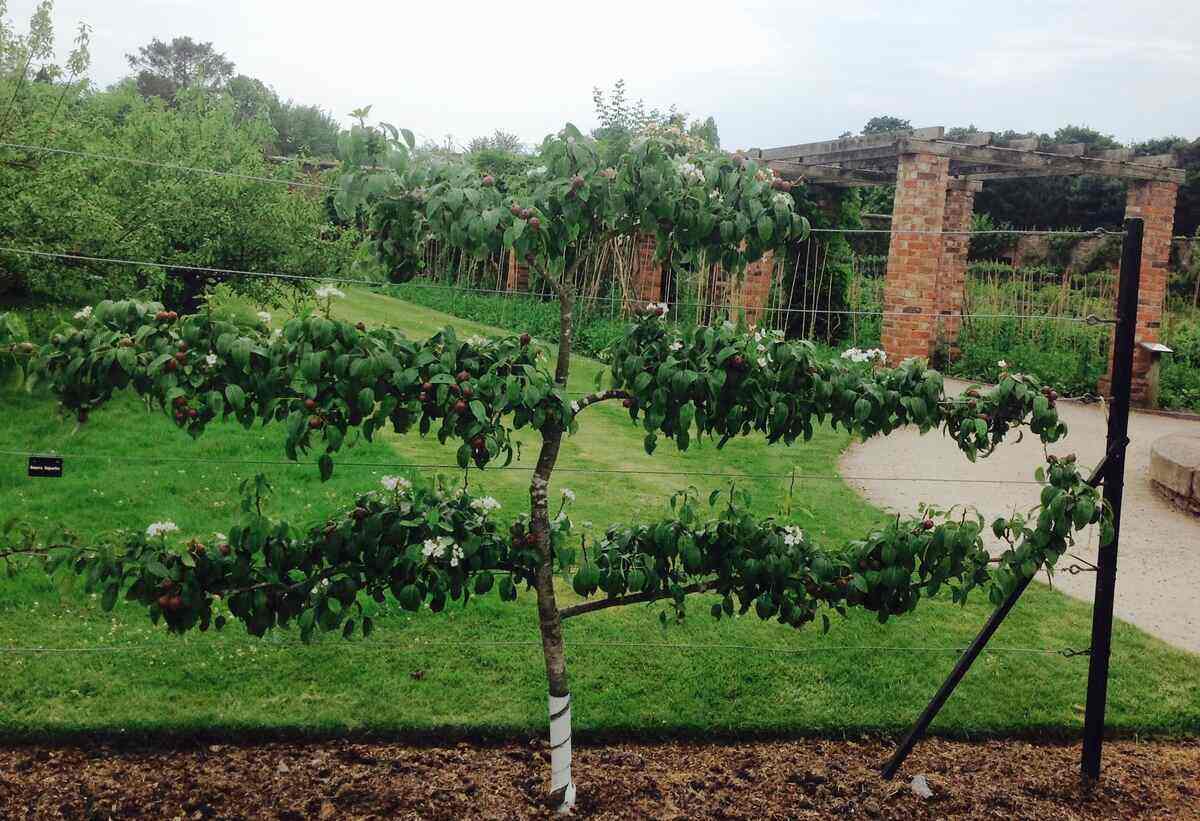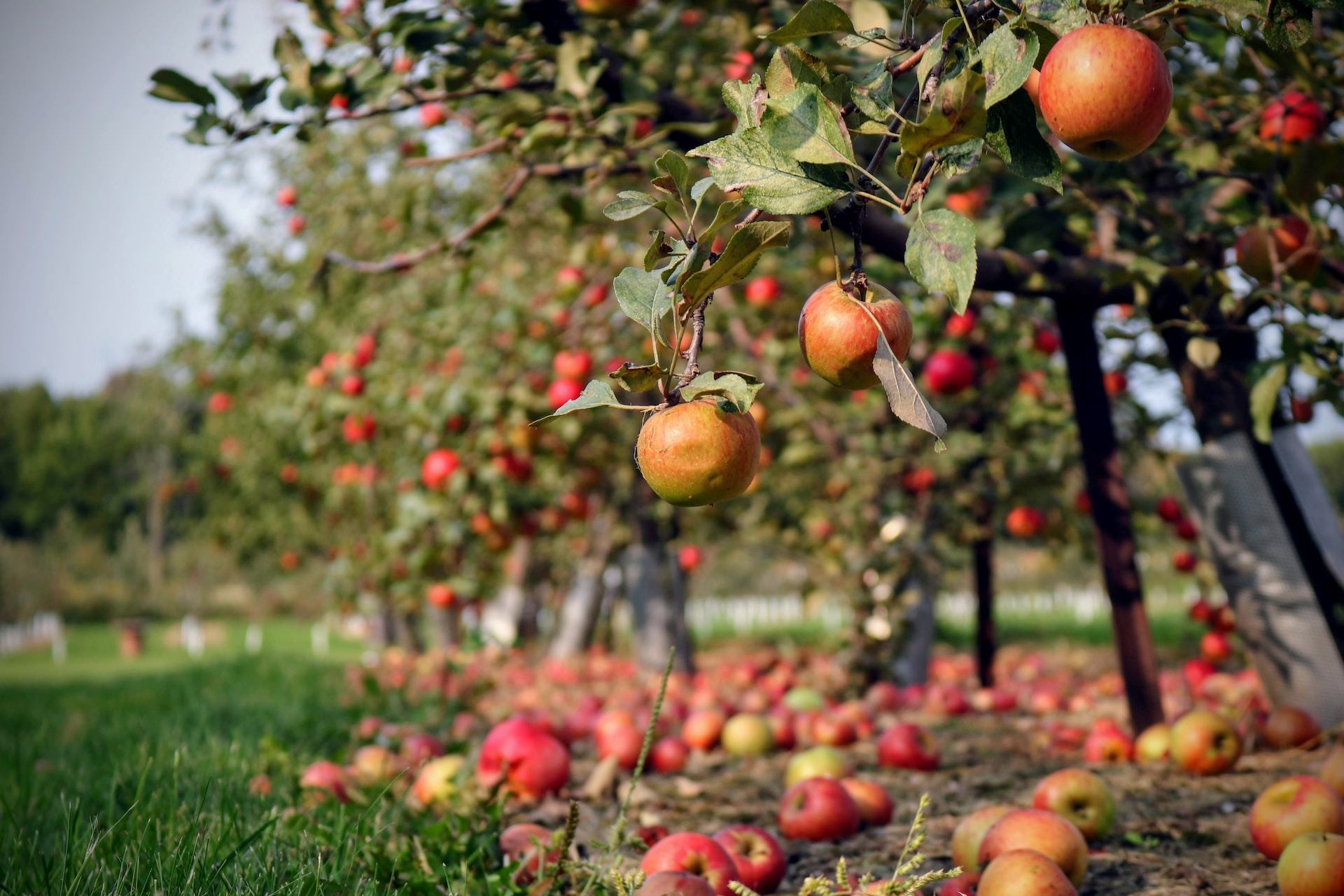Home>Gardening Tips and Tricks>Problem Solving>What To Spray On Fruit Trees For Insects


Problem Solving
What To Spray On Fruit Trees For Insects
Modified: January 22, 2024
Looking for an effective solution to protect your fruit trees from pesky insects? Discover problem-solving sprays for fruit trees that will keep pests at bay and ensure a healthy harvest.
(Many of the links in this article redirect to a specific reviewed product. Your purchase of these products through affiliate links helps to generate commission for Chicagolandgardening.com, at no extra cost. Learn more)
Table of Contents
- Introduction
- Common Insect Pests on Fruit Trees
- Importance of Spraying on Fruit Trees
- Organic Sprays for Insect Control on Fruit Trees
- Synthetic Sprays for Insect Control on Fruit Trees
- Choosing the Right Spray for Your Fruit Trees
- Proper Application of Insecticides on Fruit Trees
- Precautions and Safety Measures When Spraying Fruit Trees
- Alternative Methods of Insect Control on Fruit Trees
- Conclusion
Introduction
Welcome to our comprehensive guide on what to spray on fruit trees for insects! Fruit trees are a beautiful addition to any garden or orchard, providing us with delicious and nutritious fruits to enjoy. However, they are also a target for various insect pests that can cause significant damage to the trees and their fruit.
Whether you are a professional orchardist or a casual gardener, it’s important to protect your fruit trees from these pesky insects. Fortunately, there are various sprays available that can help control and prevent insect infestations. In this guide, we will explore the different types of sprays and methods for insect control, both organic and synthetic, to suit different preferences and needs.
Before we dive into the specifics, it’s crucial to understand the common insect pests that can affect fruit trees. Identifying these pests is the first step in implementing an effective pest control strategy. Some common examples include aphids, fruit flies, caterpillars, mites, and scale insects. Each pest has its own unique characteristics and preferred method of attack.
The importance of spraying on fruit trees cannot be overstated. Insect pests can not only damage the appearance and quality of the fruit, but they can also weaken the tree and make it more susceptible to diseases. By using the right sprays and following proper application techniques, you can maintain the health and productivity of your fruit trees.
In the following sections, we will discuss both organic and synthetic sprays for insect control on fruit trees. Organic sprays use natural ingredients and are considered safer for the environment and beneficial insects. Synthetic sprays, on the other hand, contain chemicals that provide more immediate and targeted control of insect pests.
Choosing the right spray for your fruit trees depends on various factors, such as the type of fruit tree, severity of infestation, and personal preferences. We will provide information and recommendations to help you make an informed decision. Additionally, we will cover proper application techniques, precautions, and safety measures to ensure effective and safe use of insecticides.
If synthetic sprays aren’t your cup of tea, we will also explore alternative methods of insect control on fruit trees. These methods include cultural practices, biological control, and integrated pest management. It’s important to have a holistic approach to pest control to minimize the use of chemicals and promote a healthy ecosystem in your garden or orchard.
By the end of this guide, you’ll have a solid understanding of what to spray on fruit trees for insects and how to protect your precious fruit trees from these damaging pests. So let’s dive in and get started on this journey to a healthier and thriving fruit tree garden!
Common Insect Pests on Fruit Trees
Before we delve into the various sprays and methods for insect control on fruit trees, it’s important to familiarize ourselves with the common insect pests that can plague these trees. Understanding the characteristics and behaviors of these pests will enable us to identify and target them effectively.
Aphids are one of the most common insect pests found on fruit trees. These tiny, soft-bodied insects feed on the sap of the leaves and young shoots, causing stunted growth and distortion. Aphids multiply rapidly, so it’s crucial to control their population before they cause significant damage.
Fruit flies, including the notorious Mediterranean fruit fly and the smaller vinegar fly, pose a significant threat to fruit crops. These flies lay their eggs in ripening fruits, and the hatched larvae feed on the fruit flesh, making it inedible. Fruit flies can lead to substantial yield losses if not managed properly.
Caterpillars, such as the codling moth larvae, can wreak havoc on fruit trees by tunneling into the fruit and causing internal damage. These pests are particularly damaging to apples, pears, and other pome fruits. Identifying and controlling caterpillars is crucial to ensure healthy and quality fruit production.
Mites are another common pest found on fruit trees, including spider mites and rust mites. These tiny arachnids suck the sap from the leaves, causing discoloration, leaf curling, and a decrease in fruit quality. Mites thrive in hot and dry conditions, so keeping trees adequately watered can help prevent infestations.
Scale insects are often found on the branches, trunks, and fruit of fruit trees. These small, immobile insects suck the sap from the plant, leading to yellowing leaves, stunted growth, and honeydew secretion. Scale insects can be challenging to control due to their protective waxy covering.
These are just a few examples of the many insect pests that can affect fruit trees. It’s essential to regularly inspect your trees for signs of infestation, including wilting or yellowing leaves, deformed fruits, and the presence of eggs or larvae. Early detection and intervention are key to preventing the pests from causing significant damage.
Understanding the life cycles, feeding habits, and preferred habitats of these pests will help you choose the most effective spray or method for control. Different sprays target specific pests, so it’s important to identify the problem correctly to ensure effective control.
Now that we have a better understanding of the common insect pests that can infest fruit trees, let’s explore the different sprays and methods available to control and prevent these insect infestations.
Importance of Spraying on Fruit Trees
Spraying on fruit trees is a crucial component of pest management and plays a vital role in maintaining the health and productivity of the trees. Insect pests can cause significant damage to fruit trees, affecting not only the appearance and quality of the fruit but also the overall health of the tree itself.
One of the main reasons why spraying on fruit trees is important is to control and prevent insect infestations. Insect pests, such as aphids, fruit flies, caterpillars, mites, and scale insects, can rapidly multiply and quickly spread throughout the entire tree if left unchecked. This can lead to extensive damage, including distorted growth, reduced fruit production, and even the death of the tree.
By implementing a regular spray schedule, you can prevent these pests from establishing a foothold on your fruit trees. Sprays act as a barrier, deterring or killing the insects before they can cause any significant harm. This is especially important during the critical stages of fruit development, such as blooming and ripening, when the fruit is most vulnerable to attacks.
Another crucial aspect of spraying on fruit trees is disease prevention. Some insect pests, such as aphids and fruit flies, can transmit harmful viruses and bacteria to the trees, leading to various diseases. These diseases can significantly impact the tree’s overall health and reduce its ability to produce high-quality fruit.
In addition to controlling pests, spraying on fruit trees can also help in managing fungal and bacterial diseases. Many spray solutions contain fungicides and bactericides that can effectively prevent or treat diseases like powdery mildew, fire blight, and leaf spot. These diseases can cause leaf discoloration, defoliation, and fruit rot, which can lead to substantial yield losses.
Spraying on fruit trees is not only beneficial for fruit production but also for maintaining a healthy ecosystem in and around your garden or orchard. When used responsibly, sprays can specifically target harmful insects while leaving beneficial insects unharmed. Beneficial insects, such as ladybugs, lacewings, and parasitic wasps, play a crucial role in natural pest control by preying on harmful pests. By protecting fruit trees from damaging insects, you are safeguarding the well-being of these beneficial insects and promoting a balance in your garden.
It’s important to note that effective spraying on fruit trees requires proper timing and technique. Different pests and diseases have specific life cycles and susceptibility periods. Therefore, it’s essential to follow the recommendations provided by extension services or knowledgeable sources to ensure optimum control and prevent the development of resistance in pests.
Overall, spraying on fruit trees is a key component of integrated pest management and disease prevention. It helps to protect the health and productivity of fruit trees, maintain the quality of the fruit, and promote a thriving ecosystem in your garden or orchard. By staying vigilant and implementing regular spray routines, you can enjoy bountiful harvests of healthy and delicious fruit year after year.
Organic Sprays for Insect Control on Fruit Trees
For those who prefer a more natural and environmentally friendly approach to insect control, organic sprays are an excellent option for managing pests on fruit trees. These sprays utilize natural ingredients derived from plants, minerals, or beneficial microorganisms to deter or control insect pests, without relying on synthetic chemicals.
One of the most commonly used organic sprays for insect control on fruit trees is neem oil. Derived from the neem tree, neem oil acts as a repellent, deterrent, and insect growth regulator. It can effectively control a wide range of pests such as aphids, caterpillars, mites, and scale insects. Neem oil works by disrupting the feeding and reproductive patterns of insects, ultimately leading to their demise.
Another organic spray option is insecticidal soap, which is made from potassium salts and fatty acids. This soap suffocates and dehydrates soft-bodied insects like aphids, whiteflies, and mealybugs. Insecticidal soap is a contact spray, meaning it needs to come into direct contact with the pests to be effective. Regular applications may be required for adequate control.
Pyrethrin-based sprays are another organic alternative for insect control on fruit trees. Pyrethrins are natural insecticides derived from the flowers of chrysanthemum plants. These sprays are effective against a wide range of insect pests, including aphids, caterpillars, beetles, and leafhoppers. Pyrethrins work by disrupting the nervous system of insects, resulting in paralysis and eventual death.
Spinosad is a naturally occurring substance derived from a soil-dwelling microorganism. It is an effective organic spray for controlling pests like caterpillars, thrips, and fruit flies on fruit trees. Spinosad works by targeting the nervous system of insects, causing paralysis and death. It is safe for beneficial insects and is commonly used in organic farming.
Additionally, there are organic sprays that utilize beneficial insects to control pest populations on fruit trees. These sprays contain live beneficial insects, such as ladybugs or lacewings, which feed on aphids, scales, and other harmful pests. Releasing these beneficial insects onto your trees can help establish a natural balance and reduce the need for chemical intervention.
When using organic sprays, it’s important to follow the instructions provided by the manufacturer and adhere to recommended application rates. Organic sprays may require more frequent applications compared to synthetic sprays, as they have a shorter residual action. It’s also crucial to apply these sprays during the appropriate times, such as early morning or late evening, when bees and other beneficial pollinators are less active.
Organic sprays offer an effective and environmentally friendly solution for controlling insect pests on fruit trees. They provide a safer alternative to synthetic chemicals, allowing you to enjoy healthy and pesticide-free fruits. Additionally, organic sprays help preserve the natural balance of your garden or orchard by protecting beneficial insects and promoting a sustainable ecosystem.
Synthetic Sprays for Insect Control on Fruit Trees
When it comes to controlling insect pests on fruit trees, synthetic sprays provide a powerful and targeted solution. These sprays contain chemical insecticides specifically formulated to eliminate or repel pests, offering quick and effective control for a wide range of insect infestations.
One commonly used synthetic spray for insect control on fruit trees is pyrethroid insecticides. Pyrethroids, such as permethrin and cypermethrin, are synthetically derived versions of pyrethrins, which are natural insecticides derived from chrysanthemum flowers. Pyrethroids are highly effective against pests like aphids, caterpillars, beetles, and mites. They work by targeting the nervous system of insects, causing paralysis and death.
Malathion is another widely used synthetic insecticide for fruit trees. It provides broad-spectrum control against a variety of pests, including aphids, leafhoppers, mites, and scale insects. Malathion works by inhibiting enzymes in the nervous system of insects, resulting in paralysis and eventual death.
Carbaryl, sold under the brand name Sevin, is an effective synthetic spray for controlling fruit tree pests like caterpillars, beetles, and leafhoppers. It works by disrupting the nerve signals in insects, leading to paralysis and death. Carbaryl is available in both liquid and dust formulations, making it versatile for different application methods.
Imidacloprid is a systemic insecticide commonly used on fruit trees to combat pests like aphids, scale insects, and whiteflies. It is applied to the soil or injected into the tree trunk, and it is then taken up by the tree’s vascular system, protecting the entire tree from pests. Imidacloprid works by binding to specific receptors in the insect’s nervous system, causing paralysis and death.
When applying synthetic sprays, it is crucial to carefully follow the label instructions to ensure proper dosage and safety. Synthetic sprays often have longer residual action, providing extended protection against pests. However, it is essential to strictly adhere to the recommended application timing to avoid any potential harm to beneficial insects and pollinators.
It should be noted that synthetic sprays, while effective, come with certain risks and considerations. These sprays can be harmful to beneficial insects, like bees and butterflies, if not used judiciously. Therefore, it’s important to minimize the impact on beneficial insects by applying sprays when flowers are not in bloom or during late evening hours when pollinators are less active.
When using synthetic sprays, it’s also crucial to practice good safety measures, such as wearing protective clothing and avoiding contact with the spray solution. Additionally, it’s recommended to rotate between different synthetic sprays to prevent pests from developing resistance to a specific insecticide.
Synthetic sprays for insect control on fruit trees offer an effective and targeted approach to managing pest infestations. They provide quick and reliable control against a wide range of harmful insects, ensuring the health and productivity of your fruit trees. However, it is essential to use these sprays responsibly and in accordance with label instructions to minimize any potential environmental impact.
Choosing the Right Spray for Your Fruit Trees
When it comes to choosing the right spray for your fruit trees, several factors need to be considered to ensure effective pest control while minimizing any potential harm. The specific type of fruit tree, the severity of the pest infestation, and personal preferences all play a role in making the best choice.
First and foremost, it’s essential to identify the specific pest or pests affecting your fruit trees. Different insect pests have different vulnerabilities and preferences, and certain sprays may be more effective against particular pests. By correctly identifying the pest, you can select a spray that targets the specific pest, increasing the likelihood of successful control.
Consider the type of fruit tree you are dealing with. Some fruit trees may be more sensitive to certain insecticides or sprays, so it’s important to research and choose a spray that is safe for the specific tree you are treating. Consult with local nurseries, agricultural extension offices, or reputable online sources to ensure you are using a suitable spray for your fruit tree species.
Assess the severity of the pest infestation. If the infestation is minor or localized to a specific area, spot-treatment with a targeted spray may be sufficient. For more extensive or widespread infestations, a broad-spectrum spray or systemic insecticide may be necessary to provide comprehensive control.
Consider your personal preferences and priorities. If you prefer a more natural and environmentally friendly approach, organic sprays may be your preferred choice. Organic sprays utilize natural ingredients and are generally safer for beneficial insects and the environment. However, they may require more frequent applications compared to synthetic sprays.
On the other hand, if immediate and targeted control is a priority, synthetic sprays may be the better option. Synthetic sprays often have longer residual activity and provide quicker knockdown of pests. However, they may have potential risks to beneficial insects and require careful application to minimize environmental impact.
Consult with local experts or experienced fruit tree growers for recommendations specific to your region or climate. They can provide valuable insights into the most effective sprays for your particular fruit tree variety and the pests commonly found in your area. Their knowledge and expertise can help guide you in choosing the most appropriate spray to achieve the desired results.
Regardless of the spray chosen, always read and follow the label instructions carefully. The label provides important information on dosage, application frequency, safety precautions, and specific fruit tree species that the spray is suitable for. Adhering to the label instructions ensures not only effective control of pests but also minimizes any potential risks to the tree, the environment, and yourself.
Remember, choosing the right spray for your fruit trees is crucial for effective pest control. Consider factors such as the specific pest, the type of fruit tree, the severity of infestation, preferences for organic or synthetic sprays, and seek guidance from local experts. By making an informed decision, you can successfully protect your fruit trees and enjoy healthy, pest-free harvests for years to come.
Proper Application of Insecticides on Fruit Trees
Proper application of insecticides on fruit trees is key to ensuring effective pest control and minimizing any potential risks. Applying insecticides correctly will help maximize their efficacy while reducing the impact on beneficial insects, the environment, and your own health. Here are some important considerations for the proper application of insecticides on fruit trees:
1. Timing: Apply insecticides at the appropriate time in the pest’s life cycle for maximum effectiveness. Different pests may have different vulnerable stages, such as eggs, larvae, or adults. Understanding the life cycle of the target pest will help you determine the most effective timing for application.
2. Weather conditions: Pay attention to weather conditions when applying insecticides. Avoid spraying during windy or rainy periods, as it can lead to ineffective coverage or runoff of the spray. Optimal conditions include calm weather and moderate temperatures to ensure good spray coverage and adherence to the plant surfaces.
3. Proper mixing and dilution: Follow the manufacturer’s instructions for mixing and diluting the insecticide. Use the recommended amount of insecticide and ensure proper proportions to achieve the desired concentration. Never exceed the recommended dilution rate, as this can lead to phytotoxicity and damage to the fruit trees.
4. Sprayer calibration: Calibrate your sprayer to ensure accurate application rates. This involves adjusting the nozzle settings and pressure to achieve the desired spray volume. Proper calibration ensures uniform coverage and minimizes wastage or under/over-application of the insecticide.
5. Targeted application: Focus on areas where pests are known to congregate, such as the underside of leaves, fruit clusters, and branch junctions. Direct the spray towards these target areas to ensure thorough coverage and contact with the pests. Avoid spraying excessively on non-target areas to minimize unnecessary exposure to the insecticide.
6. Safety precautions: Wear protective clothing, such as gloves, long-sleeved shirts, and goggles, when applying insecticides. This protects you from potential contact with the chemical and reduces the risk of skin or eye irritation. Consider using a face mask or respirator if working with highly concentrated or volatile insecticides.
7. Clean equipment: Clean your sprayer and other equipment thoroughly after each use to prevent cross-contamination and ensure proper functionality. Residue from previous applications can affect the efficacy of subsequent sprays or unintentionally transfer insecticides to non-target areas.
8. Timing and frequency of applications: Follow the recommended application schedule provided by the manufacturer or local extension services. Some insecticides may require multiple applications at specific intervals to effectively control pests. Applying insecticides too frequently or irregularly can lead to resistance development in pests, rendering the sprays ineffective over time.
9. Consider alternatives: If possible, consider alternative methods of insect control, such as biological control, cultural practices, or integrated pest management (IPM). These methods can help reduce the reliance on insecticides and promote a more sustainable and balanced ecosystem in your garden or orchard.
Remember, proper application of insecticides on fruit trees is essential to maximize their effectiveness and minimize any negative impacts. By following these guidelines, you can achieve optimal pest control results while safeguarding the health of your fruit trees and the environment.
Precautions and Safety Measures When Spraying Fruit Trees
When spraying insecticides on fruit trees, it is important to take necessary precautions and safety measures to protect yourself, the environment, and the health of the trees. By following these guidelines, you can ensure safe and responsible use of insecticides while effectively controlling pests:
1. Read and follow the label instructions: Always read and carefully follow the instructions provided by the manufacturer on the insecticide label. The label provides important information about proper handling, mixing, dilution rates, application methods, and safety precautions specific to the product.
2. Wear protective clothing: When applying insecticides, wear long-sleeved shirts, long pants, gloves, goggles, and closed-toe shoes to protect yourself from potential contact with the chemical. Consider using a face mask or respirator if working with highly concentrated or volatile insecticides.
3. Choose the right time and weather conditions: Avoid spraying on windy or rainy days, as it can lead to drift or runoff of the insecticide. Select a calm day with moderate temperatures to ensure proper spray coverage and adherence to the plant surfaces.
4. Minimize exposure to non-target areas: Direct the spray towards the target areas, such as the underside of leaves, fruit clusters, and branch junctions, to ensure thorough coverage of the pests. Avoid excessive spraying on non-target areas, such as flowers or open blossoms, to minimize unnecessary exposure to the insecticide and reduce harm to beneficial insects.
5. Clean equipment thoroughly: After each use, clean your sprayer and other equipment to prevent cross-contamination and maintain their functionality. Remove any residue from previous applications to avoid unintentional exposure to the insecticide during subsequent sprays.
6. Avoid spraying near water sources: Take care not to spray near ponds, streams, or other bodies of water to prevent contamination. Insecticides can be harmful to aquatic life, such as fish and frogs, so it’s important to prevent any runoff or direct contact with water sources.
7. Dispose of excess insecticide properly: Do not pour unused insecticides or rinse water down the drain or into waterways. Follow local regulations for proper disposal of excess insecticide and empty containers. Some areas have specific collection or recycling programs for pesticide containers.
8. Store insecticides safely: Keep insecticides in their original containers with the label intact and stored out of reach of children and pets, in a cool, dry, and well-ventilated area. Secure the containers to prevent accidental spills or leaks.
9. Follow restricted-entry intervals (REIs): Pay attention to the REIs indicated on the insecticide label. REIs specify the time duration that individuals should avoid entering the treated area after spraying to ensure safety. Adhere to the specified REIs to reduce the risk of exposure to the insecticide.
10. Use integrated pest management (IPM) practices: Incorporate IPM techniques into your pest control strategy. This approach integrates various pest control measures, such as cultural practices, biological control, and judicious use of insecticides, to minimize the reliance on chemical treatments and promote a more sustainable and balanced ecosystem.
By following these precautions and safety measures, you can ensure the responsible use of insecticides when spraying fruit trees. Remember to prioritize your safety, take care to protect the environment, and maintain the health and productivity of your fruit trees.
Alternative Methods of Insect Control on Fruit Trees
While insecticides are commonly used for controlling pests on fruit trees, there are alternative methods that can help reduce the reliance on chemicals and promote a more sustainable and balanced approach to pest management. These alternative methods focus on practices that work with nature, utilizing natural predators, cultural practices, and other techniques to minimize insect populations. Here are a few effective alternative methods of insect control on fruit trees:
1. Biological control: Encouraging natural predators and beneficial insects in your garden or orchard is an effective way to control pests. Ladybugs, lacewings, and parasitic wasps are examples of beneficial insects that prey on aphids, caterpillars, and other harmful pests. You can attract these beneficial insects by planting nectar-rich flowers, providing shelter, and avoiding the use of broad-spectrum insecticides that may harm them.
2. Cultural practices: Implementing cultural practices can help prevent and manage insect infestations. Proper tree maintenance, such as regular pruning and removal of diseased or damaged branches, can create a healthier and less hospitable environment for pests. Cleaning up fallen fruits and debris around the tree helps to reduce pest hiding places and breeding grounds.
3. Physical barriers: Physical barriers like netting or fine mesh can be employed to physically exclude pests from reaching the fruit. This method is particularly effective against larger pests like birds and rodents. Ensure that the barriers are properly secured to prevent any gaps or openings that pests can exploit.
4. Pheromone traps: Pheromone traps release synthetic hormones that mimic the scent of female insects, attracting and trapping male insects. This method can be effective in reducing the population of specific pests, such as certain types of moths or fruit flies. Pheromone traps are most effective when used in conjunction with other control tactics.
5. Horticultural oils: Horticultural oils, such as dormant oil or summer oil, can be used to suffocate overwintering pests like scale insects and mites. These oils create a thin film on the tree surfaces, preventing insects from obtaining oxygen and causing their suffocation. It is important to apply horticultural oils during the appropriate season and follow label instructions carefully.
6. Beneficial nematodes: Beneficial nematodes are microscopic worms that can be applied to the soil to control certain soil-dwelling pests, such as root weevils or grubs. These nematodes infect and kill the larvae of these pests, effectively reducing their population. Follow the recommended application techniques and timing for the specific nematode species.
7. Integrated pest management (IPM): Implementing an integrated pest management approach combines various control methods to manage pest populations efficiently and sustainably. IPM involves monitoring pest presence, conserving beneficial insects, using organic sprays when necessary, and implementing cultural practices to minimize pest damage. This holistic approach aims to strike a balance between pest control and maintaining a healthy ecosystem.
It’s important to note that alternative methods of insect control may require a combination of approaches and may not provide immediate results compared to the use of chemical insecticides. These methods require patience, observation, and proactive management. By implementing these alternative methods, you can reduce the impact on beneficial species, preserve the environment, and promote natural pest control in your fruit tree garden.
Conclusion
Controlling insect pests on fruit trees is essential to ensure healthy and productive trees and a bountiful harvest. With the variety of sprays and alternative methods available, there are choices and approaches suitable for every gardener and orchardist.
In this comprehensive guide, we have explored the common insect pests that can affect fruit trees, highlighting their characteristics and potential damage. Recognizing these pests is crucial in determining the most effective control methods.
We have discussed the importance of spraying on fruit trees to prevent and manage insect infestations. Proper application of sprays, whether organic or synthetic, is key to achieving effective pest control while minimizing risks to beneficial insects and the environment.
For those who prefer a natural approach, organic sprays provide an environmentally friendly option for insect control. Utilizing ingredients derived from plants, minerals, and beneficial microorganisms, organic sprays can effectively deter or control pests without relying on synthetic chemicals.
Synthetic sprays, on the other hand, offer targeted control and quick results. These sprays contain chemical insecticides formulated to eliminate or repel pests. Understanding the specific pests and selecting the right spray for the fruit tree species is vital for successful pest management.
Additionally, we have explored alternative methods of insect control on fruit trees, such as biological control, cultural practices, physical barriers, and pheromone traps. While these methods may require more effort and time, they offer sustainable and balanced approaches that minimize the reliance on chemical interventions.
It is important to follow precautions and safety measures when spraying fruit trees to protect yourself, the environment, and the health of the trees. By adhering to label instructions, wearing protective clothing, and employing appropriate application techniques, you can ensure responsible use of insecticides.
In conclusion, by choosing the right spray, employing alternative methods, and practicing proper application techniques, you can effectively control insect pests on your fruit trees while maintaining a healthy and thriving orchard or garden. By striking a balance between pest control and environmental stewardship, you can enjoy the beauty, abundance, and flavors of your fruit trees for years to come.
